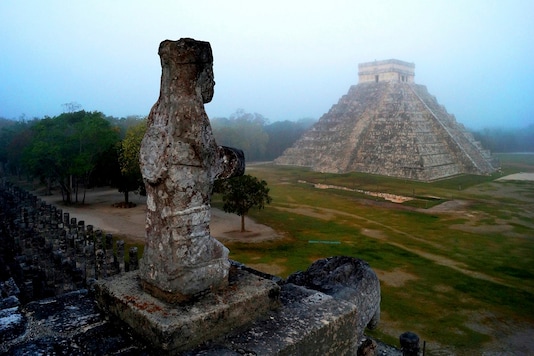The Mayan civilisation has always been a subject of mystery and intrigue among researchers and common people alike. From conspiracy theories of Mayans predicting the end of the world in 2012 to its apparent sudden eradication from the planet – there are many unanswered questions when it comes to them.
However, it’s possible that we finally have more concrete answers. Scientists believe they have found out the exact date on which a cataclysmic volcano erupted in the Mayan civilisation over a millennium ago. It has been known that a volcano Ilopango erupted in what is now known as El Salvador. The event happened during the Early Classic Mayan period which is around 300 to 600 AD. However, they have a precise date now.
The answer was held in the folds of a Mahogany tree. The ash deposit was discovered and then analysed using carbon-dating. Based on the result, archaeologists place the volcanic explosions to 431 AD, give or take a couple of years. The study was led by archaeologist Victoria Smith from Oxford University.
In addition to the dating process, they also used 3-D modelling to estimate the eruption plume that rose up to 28 miles upwards into the atmosphere. But the expelled material didn’t fall back straight. Air currents carried the volcanic ashes more than 4,300 miles, almost till Antarctica.
In addition to this, another proof was found in Greenland. An ice core was recovered with a similar chemical make-up. This core was dated as 1,590 years old, proving the archaeologists’ hypothesis right.
While volcanoes are always a danger to be around, it is understandable why the ancient Mayans chose the location as their home. Volcanic soil is extremely fertile, therefore, the valleys around El Salvador could support dense Mayan populations.
The period when the eruption occurred is also known as the Golden Age of Mayan civilisation. It was flourishing, spreading its reach as far as New Mexico (as revealed by recently discovered artefacts), but then the eruption happened. It is estimated that around the volcano, a 2m (6 feet) deep blanket of volcanic ash covered hundreds of square kilometres of Maya farmland.
However, the aftermath is still unclear as there are no written records, according to Arstechnica. The Mayans must have found a way to survive because the civilisation survived till 900 AD.
